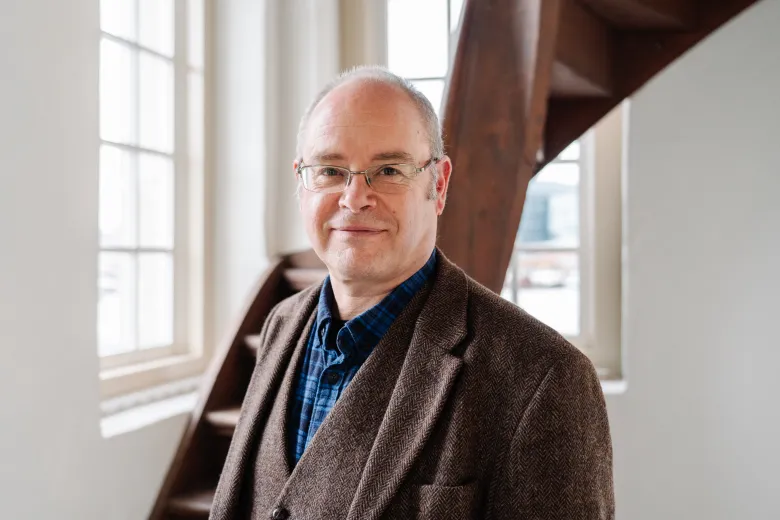The National Maritime Museum in Amsterdam stimulates research on objects in the museum collection with two fellowships. Read more about the research that fellows who started in 2023 conducted
Jaap Jacobs
Boxer’s volumes
On 1 May 2023 I started as Dr. Ernst Crone Fellow at the National Maritime Museum in Amsterdam. My research focuses on two volumes in the collection, A 2496(01) nr. 1 and A 2496(01) nr. 2. These volumes contain contemporary copies of documents from 1661-1668 concerning the Second Anglo-Dutch War. The National Maritime Museum in Amsterdam acquired the two volumes in 1948 from Charles R. Boxer (1904-2000), who after his military career gained great fame as historian of Portuguese and Dutch expansion in the seventeenth and eighteenth century. The two volumes raise a variety of questions. Who are the original drafters and which purpose do the documents have? There is also the question of how the volumes eventually end up in Boxer’s possession and how they were transferred to the museum. These questions fit the increasing attention for the history of museum and private collection building and can be partially answered through auction catalogues and correspondence.
As a first step in my research, I traced the provenance of the two volumes. Boxer’s correspondence made it clear that he had bought them in 1933 from the Amsterdam book store and auction house R.W.P. de Vries. They came from an auction of documents of the family archive of Van Foreest. The auction catalogue, which I found in the Van Foreest family archive, revealed that the two volumes came from Cornelis de Groot, secretary of the Admiralty of the Dutch Northern Quarter in the seventeenth century. They have ended up in the Van Foreest family archive around 1700 because Eva Maria de Groot, daughter of Cornelis, married Dirk van Foreest. When studying the volumes more closely, it turns out to include copies of letters and other documents from the archive from the committee of the States General that supervised Admiralty business. Why Cornelis de Groot had these particular documents copied, is yet unclear.
Secondly, the acquisition by the National Maritime Museum in Amsterdam. When Boxer bought the volumes, he had just started his research on Dutch warfare at sea in the seventeenth century, which explains his purchase. After the Second World War, Boxer exchanged the volumes with the museum; he received, among others, Dutch translation of a book in Latin on Dutch Brazil. The correspondence of Boxer with Willem Voorbeijtel Cannenburg, then director of the museum, offers a fascinating insight into the “Gentleman’s agreement” through which the museum acquired the volumes.

Jaap Jacobs
Credits: Almichael Fraay
Matthias Lukkes
Dutch Company gardens near Dutch Gold Coast settlements in the eighteenth century
On 3 August 1702 canon shots were fired from the Dutch fort Coenraadsburg. The shots were not ones of conflict, but of celebration of the diplomatic agreement struck between the Dutch West India Company and the African rulers of Sabu, Commenda and Fetu. The Company garden, located under the fort, served as the location of the diplomatic ceremony where Dutch and African signatures under the agreement were set.
As was the case for many European overseas trading posts and settlements in the early modern world, most Dutch forts located on the coast of current-day Ghana had a garden. Gardens of European settlements are generally considered as sources for subsistence of the European servants. As the above ceremony shows, however, early modern settlement gardens served as important spaces of cross-cultural interactions. The garden was considered as a neutral space within the African and European spheres of influence. They served as the scenery for diplomatic ceremonies, political negotiations and conflict resolution between European Company servants and African rulers. As such, the gardens serve as important social spaces to study Euro-African political and cultural interactions in the early modern period.
As Prof. J.C.M. Warnsinck Fellow I study the development of the Company gardens outside of Dutch forts on the Gold Coast (roughly covering the current-day coastal region of Ghana). Central to my research is a drawing from the collection of the National Maritime Museum. The drawing stems from roughly 1706 and gives an impression of the Company garden located in Elmina. I study the background of the drawing and the changing social, cultural, and diplomatic functions of the garden as the eighteenth century progressed. Why was the garden used as a suitable place for Euro-African interactions? And how did the social function of the garden change as the political power dynamics changed?
Much of European social-life and many of the Euro-African interactions occurred outside of Europeans forts, yet the forts have been center-stage in studies on early modern historical enquiries on the Gold Coast. By focusing on the gardens located outside of the fort, this study recenters European social-life and Euro-African interactions.

Matthias Lukkes
Credits: Almichael Fraay
Lianne Wilhelmus
The changing imagery of the Cape Colony (1652-1795) in the collection of the National Maritime Museum
In the collection of the Maritime Museum is an extraordinary object: a silver tobacco box from 1761 belonging to VOC sailor Jan Jans. In tobacco boxes, tobacco could be stored and carried around. In this way, it could also be displayed as a showpiece in the house. Most tobacco boxes that have survived history are silver, some copper and a few ivories. Decorations are also common, but what really sets the tobacco box from the collection of the National Maritime Museum apart is the travel description in the inside of the lid. Notes of all the voyages Jan Jans made for the VOC can be read. Moreover, the depictions of Batavia on the front and the Cape of Good Hope on the back are of high quality. The question is: how did a simple young sailor like Jan Jans acquire such an expensive box? Why did he own it? What does this tobacco box say about the depiction of the Cape Colony at the end of the 18th century? This is what I will be investigating in the coming months as a Prof J.C.M Warnsinsck fellow.
In my research on the Cape Colony, I look at images of the Cape Colony during Dutch rule, from the mid-17th century to the end of the 18th century. From the mid-17th century, the emergence of the VOC, the need arose for ships to have a supply point on the long and risky journey towards Indonesia. After conquest of the area by nearly a hundred colonists led by commander Jan van Riebeeck, the area around the Cape of Good Hope was used as the VOC's refreshment station. Within a few decades, the area grew into a veritable settlement colony for retired sailors, their families and enslaved people. In the case of the Cape Colony, I expect it will be interesting to see if European imagery changes as knowledge about the area, its plating and inhabitants developed. Moreover, it will be interesting to investigate the origins of some similar prints.